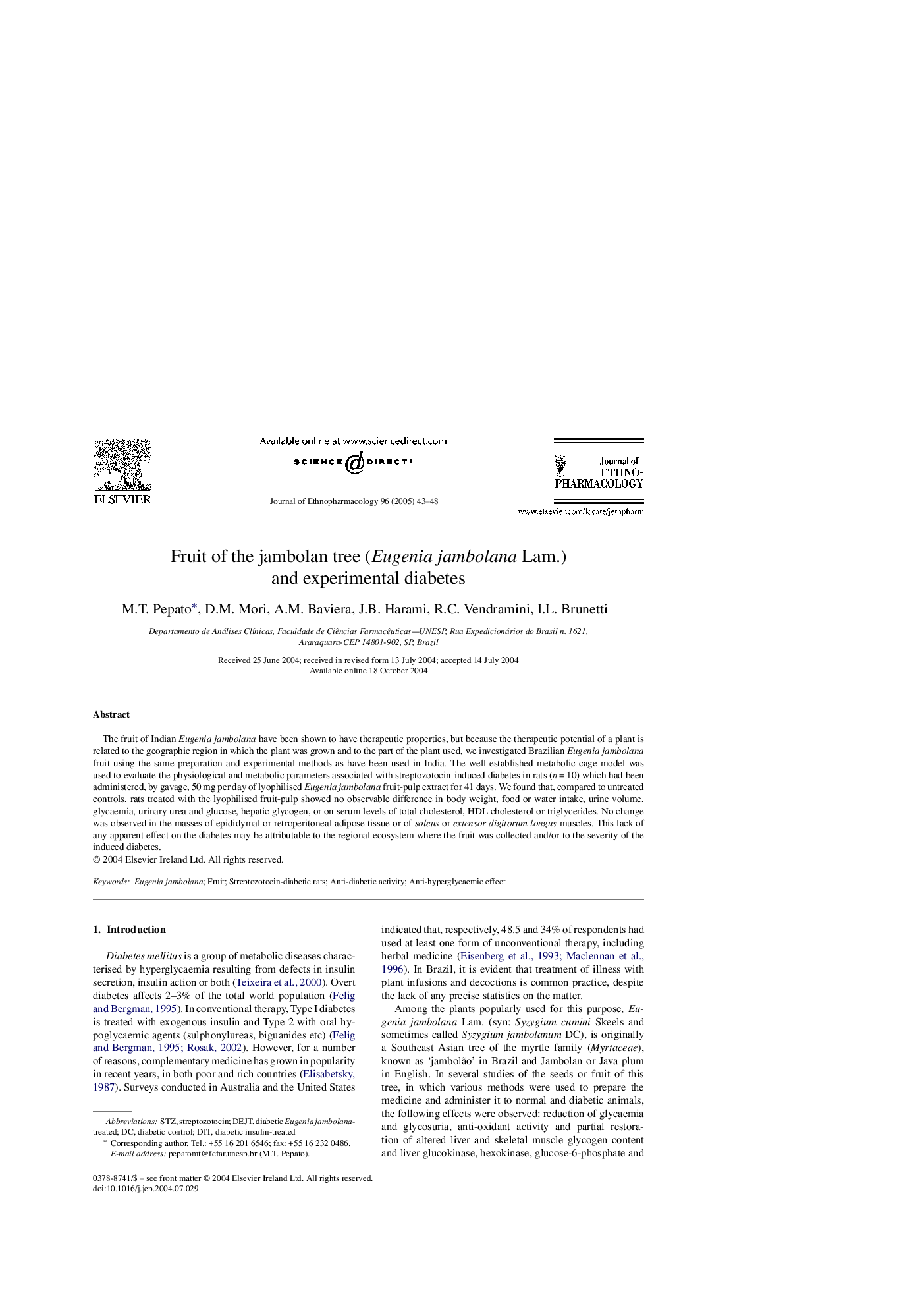| Article ID | Journal | Published Year | Pages | File Type |
|---|---|---|---|---|
| 9009942 | Journal of Ethnopharmacology | 2005 | 6 Pages |
Abstract
The fruit of Indian Eugenia jambolana have been shown to have therapeutic properties, but because the therapeutic potential of a plant is related to the geographic region in which the plant was grown and to the part of the plant used, we investigated Brazilian Eugenia jambolana fruit using the same preparation and experimental methods as have been used in India. The well-established metabolic cage model was used to evaluate the physiological and metabolic parameters associated with streptozotocin-induced diabetes in rats (n = 10) which had been administered, by gavage, 50 mg per day of lyophilised Eugenia jambolana fruit-pulp extract for 41 days. We found that, compared to untreated controls, rats treated with the lyophilised fruit-pulp showed no observable difference in body weight, food or water intake, urine volume, glycaemia, urinary urea and glucose, hepatic glycogen, or on serum levels of total cholesterol, HDL cholesterol or triglycerides. No change was observed in the masses of epididymal or retroperitoneal adipose tissue or of soleus or extensor digitorum longus muscles. This lack of any apparent effect on the diabetes may be attributable to the regional ecosystem where the fruit was collected and/or to the severity of the induced diabetes.
Keywords
Related Topics
Health Sciences
Pharmacology, Toxicology and Pharmaceutical Science
Pharmacology
Authors
M.T. Pepato, D.M. Mori, A.M. Baviera, J.B. Harami, R.C. Vendramini, I.L. Brunetti,
